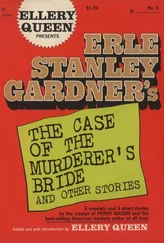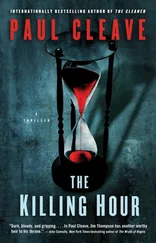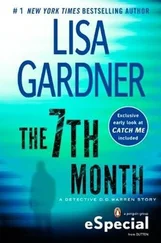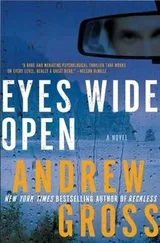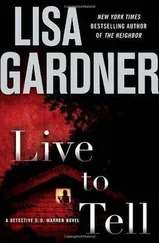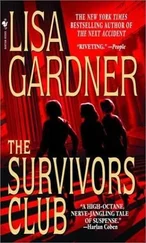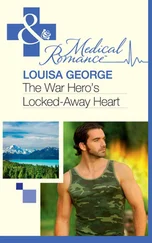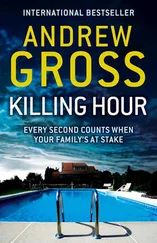The going was slower here, the speed limit a steady 35 mph, which was just as well because suddenly there were a million things to see and not nearly enough time to look. Wild grass bordered the winding road, thickly dotted with yellow and white flowers, while deeper in the woods a vast array of ferns spread out like a thick green carpet. Towering oak trees and majestic beeches wove their branches overhead, breaking the sun into a dozen pieces of gold. A yellow butterfly darted in front of them. Kimberly gasped, and Mac turned just in time to see a mother and fawn cross the road behind them.
He spotted two yellow finches playing tag in a grove of pine trees. Then they were already upon the first viewing platform, where the trees gave way and half of Virginia once again opened up before them.
Mac pulled over. He was no neophyte to the great outdoors, but sometimes a man just had to sit and stare. He and Kimberly absorbed the panorama of emerald forest mixing with gray stone outcrops and brightly colored wildflowers. The Blue Ridge Mountains really knew how to put on a show.
“Do you think he’s really an environmentalist?” Kimberly murmured quietly.
Mac didn’t need to ask to know whom she meant. “I’m not sure. He certainly picks some great places.”
“The planet is dying,” she said softly. “Look over to the right. You can see patches of dead hemlocks, probably killed by the wooly adelgid, which is infesting so many of our forests. And while this range is protected as a national park, how long will the valley before us remain untouched? Someday, those fields will become subdivisions, while all of those distant trees will be turned into yet more strip malls to feed hungry consumers. Once upon a time, most of the U.S. looked like this. Now you have to drive hundreds of miles just to find this kind of beauty.”
“Progress happens.”
“That’s nothing but an excuse.”
“No,” Mac said abruptly. “And yes. Everything changes. Things die. We probably should fear for our kids. But I still don’t know what that has to do with why one man kills a bunch of innocent women. Maybe this guy wants to think he’s different. Hell, maybe he does have some sort of conscience and it bothers him to kill for killing’s sake. But the letters, the environmental talk… Personally, I think it’s nothing but a bunch of bullshit designed to give the Eco-Killer permission to do what he really wants to do-kidnap and kill women.”
“In psychology,” Kimberly said, “we learn that there are many different reasons for why people behave certain ways. This applies to killers as well. Some killers are driven by ego, by their own overdeveloped id, which puts their needs first and refuses to accept limits on their behavior. It’s the serial killer who kills because he likes to feel powerful. It’s the stockbroker who murders his mistress after she threatens to tell his wife, because he honestly believes his own desire for security is more important than another person’s life. It’s the kid who pulls the trigger, just because he wants to.
“There’s another kind of killer, though. The morality killer. That’s the fanatic who walks into a synagogue and opens fire because he believes it is his duty. Or the person who shoots abortion doctors because she believes they are committing a sin. These people don’t kill to satisfy their inner child, but because they believe such an act is right. Perhaps the Eco-Killer falls into the morality category.”
Mac arched a brow. “So these are our choices? Immature whackos on the one hand and righteous whackos on the other?”
“Technically speaking.”
“All right. You want psychobabble? I can play this game. I believe it was Freud who said everything we do communicates something about ourselves.”
“You know Freud?”
“Hey, don’t let the good looks fool you, honey. I have a brain in my head. So all right, according to Freud, the tie you pick, the ring you wear, the shirt you buy, all say something about you. Nothing is random, everything you do has intent. Fine, now let’s look at what this guy does. He kidnaps women traveling in pairs. Always young females leaving a bar. Now why does he do that? Seems to me that the terrorist type of killer goes after people of a certain faith-but then will equally target man, woman, or child. The moral killer goes after the abortion doctor for his occupation, not for his sex. And yet then we got our guy again. Eight victims in Georgia, ten if you think he struck here, and always a young, college-aged girl leaving a bar. Now what does that communicate about him?”
“He doesn’t like women,” Kimberly answered softly. “Particularly women who drink.”
“He hates them,” Mac said flatly. “Loose women, fast women, I don’t know how he categorizes them in his mind, but he hates women. I don’t know why. Maybe he doesn’t know why. Maybe he honestly believes this is about the environment. But if our guy was really about saving the world, then we should see some variety in his targets. We don’t. He only goes after women. Period. And in my mind, that makes him just another garden-variety very dangerous whacko.”
“You don’t believe in profiling?”
“Kimberly, we’ve had a profile for four years. Ask that poor girl in the morgue if it’s done a thing to help us yet.”
“Bitter.”
“Realistic,” he countered. “This case isn’t going to be solved in the back room by some guy in a suit. It’s going to be solved out here, roaming these mountains, sweating buckets, and dodging rattlesnakes. Because that’s what Eco-Killer wants. He hates women, but every time he sticks one in a dangerous location, he’s also targeting us . Law enforcement officers, search-and-rescue workers-we’re the ones who have to walk these hills and sweat this terrain. Don’t think he doesn’t know it.”
“Have any search-and-rescue workers been hurt?”
“Hell, yes. In the Tallulah Gorge we had several falls and broken limbs. The cotton field caused two volunteers to succumb to heatstroke. Then we had a wonderful search along the Savannah River, where one guy tangled with a gator, and two people were bitten by cottonmouth snakes.”
“Fatalities?” she asked sharply.
Mac looked back out at the vast, plunging terrain. He murmured, “Well, honey, not yet.”
Shenandoah National Park, Virginia
1:44 P . M .
Temperature: 97 degrees
KATHY LEVINE WAS A PETITE, NO-NONSENSE WOMAN with short-cropped red hair and a dash of freckles across her nose. She greeted Mac and Kimberly briskly as they entered the glass-and-beam expanse of Big Meadows Lodge and beckoned them immediately toward a back office.
“Ray said you had a picture of a leaf. Not a real leaf, mind you, but a picture.”
“Yes, ma’am.” Mac dutifully provided the scanned image. Kathy plopped it down on the desk in front of her and snapped on a bright overhead light. It barely made a dent in a room already lit by an entire wall of sunshine.
“It could be a gray birch,” the botanist said at last. “It would be better if you had the real leaf.”
“Are you a dendrologist?” Kimberly asked curiously.
“No, but I know what’s in my park.” The woman snapped off the light and regarded them both frankly. “Are you two familiar with refugia?”
“Refugee what?” Mac said.
“That’s what I thought. Refugia is a term for plants that exist as glacial relics in a climate where they no longer belong. Essentially, millions of years ago, this whole area was ice. But then the ice melted and certain plants got left behind. In most cases, those plants moved high up in the mountains, seeking the cool conditions they need to survive. Balsam fir and red cedar are both examples of refugia found in this park. And so is gray birch.”
Читать дальше

